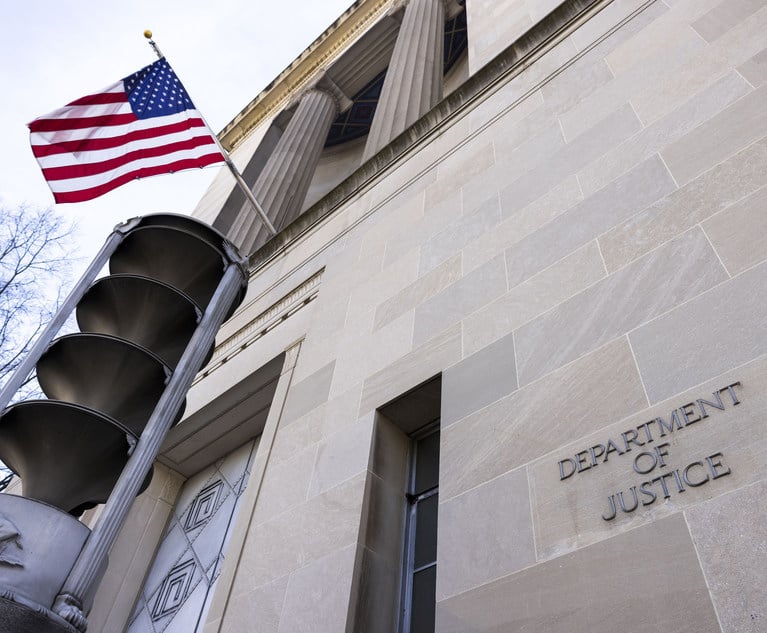Decision Time: What New York State Is Doing, Might Do and Should Not Do on Climate Change
In this edition of their Domestic Environmental Law column, Karen Meara and Christopher Rizzo offer their thoughts on several specific initiatives that are under consideration by the New York State Climate Action Council and/or have been proposed by the New York State Legislature.
October 19, 2021 at 12:15 PM
10 minute read
 As 2021 winds down, the New York State Climate Action Council (the Council) is in high gear. The Climate Leadership and Community Protection Act of 2019 (the Climate Act) requires the Council to produce a draft scoping plan by Jan. 1, 2022 to lay out a proposed road map for achieving the deep greenhouse gas reductions required under the Act. While January 1st will hardly be the final word (the draft plan will be the subject of extensive public hearings in 2022), we offer thoughts on several specific initiatives that are under consideration by the Council and/or have been proposed by the New York State Legislature in the interim.
As 2021 winds down, the New York State Climate Action Council (the Council) is in high gear. The Climate Leadership and Community Protection Act of 2019 (the Climate Act) requires the Council to produce a draft scoping plan by Jan. 1, 2022 to lay out a proposed road map for achieving the deep greenhouse gas reductions required under the Act. While January 1st will hardly be the final word (the draft plan will be the subject of extensive public hearings in 2022), we offer thoughts on several specific initiatives that are under consideration by the Council and/or have been proposed by the New York State Legislature in the interim.
New York's Carbon Reduction Goals
The centerpiece of the Climate Act is a provision calling for a 40% reduction in greenhouse gas emissions from all sources by 2030 (over 1990 levels) and an 85% reduction by 2050. The Council must issue a final scoping plan for achieving those goals by Jan. 1, 2023. By Jan. 1, 2024 the NYS Department of Environmental Conservation (DEC) must promulgate regulations ensuring that "aggregate emissions of greenhouse gas emission sources will not exceed" the established limits. The Climate Act requires those regulations to "include legally enforceable emissions limits, performance standards, or measures or other requirements to control emissions from greenhouse gas emission sources" and to "reflect, in substantial part, the findings of the scoping plan … ." See NYS Envtl. Cons. L. §75-0109. The Council has determined that over half of current GHG emissions come from buildings and transportation, particularly heating systems and passenger vehicles, and thus these two areas have been a major focus of the Council's work.
The Climate Act also requires electric service providers to purchase at least 70% of electricity from renewable sources by 2030 and 100% from carbon-free sources (including nuclear) by 2040. Carbon-free electricity will be key to achieving the "all sources" goals, as electrification of vehicles and building heating systems are expected to feature prominently in the Council's draft scoping plan.
This content has been archived. It is available through our partners, LexisNexis® and Bloomberg Law.
To view this content, please continue to their sites.
Not a Lexis Subscriber?
Subscribe Now
Not a Bloomberg Law Subscriber?
Subscribe Now
NOT FOR REPRINT
© 2024 ALM Global, LLC, All Rights Reserved. Request academic re-use from www.copyright.com. All other uses, submit a request to [email protected]. For more information visit Asset & Logo Licensing.
You Might Like
View All
'So Many Firms' Have Yet to Announce Associate Bonuses, Underlining Big Law's Uneven Approach
5 minute read
Tik Tok’s ‘Blackout Challenge’ Confronts the Limits of CDA Section 230 Immunity
6 minute read
Enemy of the State: Foreign Sovereign Immunity and Criminal Prosecutions after ‘Halkbank’
10 minute read
Government Attorneys Are Flooding the Job Market, But Is There Room in Big Law?
4 minute readLaw Firms Mentioned
Trending Stories
- 1Call for Nominations: Elite Trial Lawyers 2025
- 2Senate Judiciary Dems Release Report on Supreme Court Ethics
- 3Senate Confirms Last 2 of Biden's California Judicial Nominees
- 4Morrison & Foerster Doles Out Year-End and Special Bonuses, Raises Base Compensation for Associates
- 5Tom Girardi to Surrender to Federal Authorities on Jan. 7
Who Got The Work
Michael G. Bongiorno, Andrew Scott Dulberg and Elizabeth E. Driscoll from Wilmer Cutler Pickering Hale and Dorr have stepped in to represent Symbotic Inc., an A.I.-enabled technology platform that focuses on increasing supply chain efficiency, and other defendants in a pending shareholder derivative lawsuit. The case, filed Oct. 2 in Massachusetts District Court by the Brown Law Firm on behalf of Stephen Austen, accuses certain officers and directors of misleading investors in regard to Symbotic's potential for margin growth by failing to disclose that the company was not equipped to timely deploy its systems or manage expenses through project delays. The case, assigned to U.S. District Judge Nathaniel M. Gorton, is 1:24-cv-12522, Austen v. Cohen et al.
Who Got The Work
Edmund Polubinski and Marie Killmond of Davis Polk & Wardwell have entered appearances for data platform software development company MongoDB and other defendants in a pending shareholder derivative lawsuit. The action, filed Oct. 7 in New York Southern District Court by the Brown Law Firm, accuses the company's directors and/or officers of falsely expressing confidence in the company’s restructuring of its sales incentive plan and downplaying the severity of decreases in its upfront commitments. The case is 1:24-cv-07594, Roy v. Ittycheria et al.
Who Got The Work
Amy O. Bruchs and Kurt F. Ellison of Michael Best & Friedrich have entered appearances for Epic Systems Corp. in a pending employment discrimination lawsuit. The suit was filed Sept. 7 in Wisconsin Western District Court by Levine Eisberner LLC and Siri & Glimstad on behalf of a project manager who claims that he was wrongfully terminated after applying for a religious exemption to the defendant's COVID-19 vaccine mandate. The case, assigned to U.S. Magistrate Judge Anita Marie Boor, is 3:24-cv-00630, Secker, Nathan v. Epic Systems Corporation.
Who Got The Work
David X. Sullivan, Thomas J. Finn and Gregory A. Hall from McCarter & English have entered appearances for Sunrun Installation Services in a pending civil rights lawsuit. The complaint was filed Sept. 4 in Connecticut District Court by attorney Robert M. Berke on behalf of former employee George Edward Steins, who was arrested and charged with employing an unregistered home improvement salesperson. The complaint alleges that had Sunrun informed the Connecticut Department of Consumer Protection that the plaintiff's employment had ended in 2017 and that he no longer held Sunrun's home improvement contractor license, he would not have been hit with charges, which were dismissed in May 2024. The case, assigned to U.S. District Judge Jeffrey A. Meyer, is 3:24-cv-01423, Steins v. Sunrun, Inc. et al.
Who Got The Work
Greenberg Traurig shareholder Joshua L. Raskin has entered an appearance for boohoo.com UK Ltd. in a pending patent infringement lawsuit. The suit, filed Sept. 3 in Texas Eastern District Court by Rozier Hardt McDonough on behalf of Alto Dynamics, asserts five patents related to an online shopping platform. The case, assigned to U.S. District Judge Rodney Gilstrap, is 2:24-cv-00719, Alto Dynamics, LLC v. boohoo.com UK Limited.
Featured Firms
Law Offices of Gary Martin Hays & Associates, P.C.
(470) 294-1674
Law Offices of Mark E. Salomone
(857) 444-6468
Smith & Hassler
(713) 739-1250






